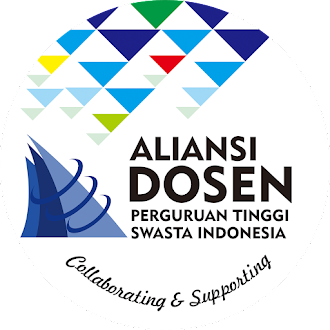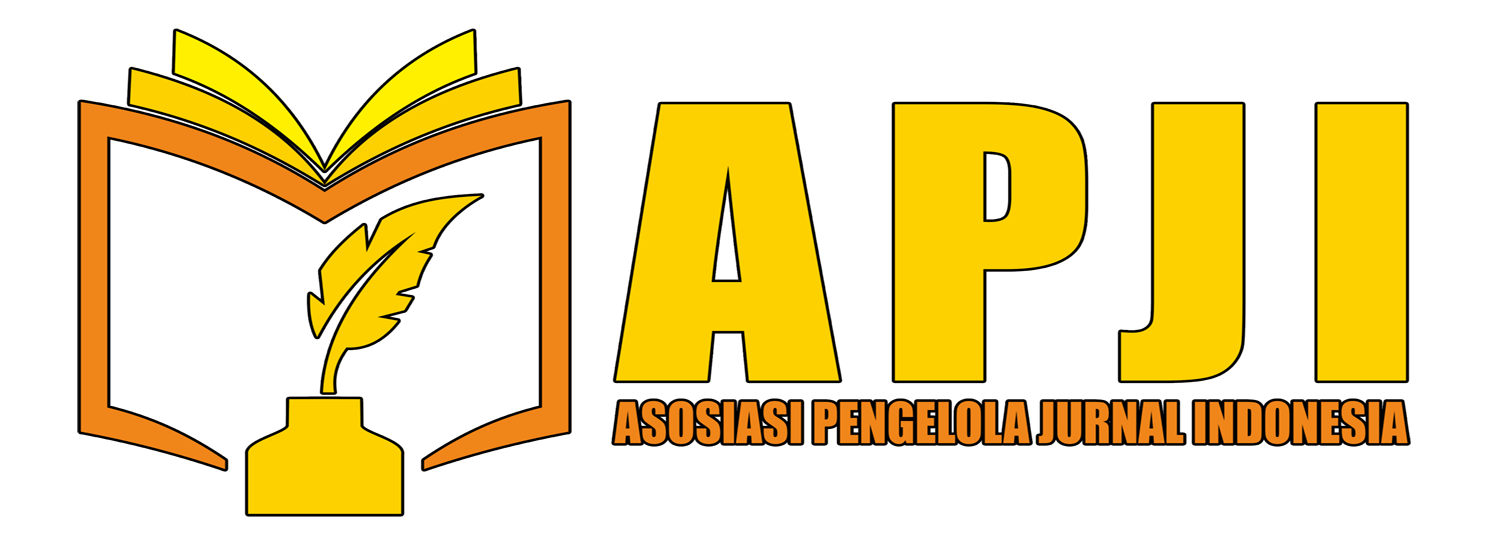THE EFFECT OF MICROMANAGE LEADERSHIP STYLE ON GENERATION Z WORKERS: SELF-EFFICACY AS A MEDIATION OF JOB SATISFACTION
DOI:
https://doi.org/10.62567/micjo.v2i2.645Keywords:
Self-efficacy; Leadership Style; Job Satisfaction; MicromanagementAbstract
In order to show how a micromanaged leadership style impacts job satisfaction among generation Z employees, this study used self-efficacy as a mediating variable. The study's sample and demographic were Riau Province's Generation Z workers, who were born between 1997 and 2012. The sample size consisted of 203 respondents using a non-probability sampling approach and a questionnaire survey for data collection. The study's conclusions were tested using SmartPLS 3. It featured an outside model, like a validity and reliability test, and an interior model, such a model fit test and a research hypothesis test. The results of the investigation demonstrated the validity and accuracy of each indicator. The hypothesis test results demonstrated that job satisfaction was positively and significantly impacted by self-efficacy, that self-efficacy was positively and significantly impacted by micromanaged leadership style, and that job satisfaction was not significantly impacted by leadership style. Indirect hypothesis testing using self-efficacy as a mediator between job satisfaction and the micromanaged leadership style produced positive and significant results. The results of the study indicate that the relationship between work happiness and micromanagement leadership style can be totally mediated by self-efficacy.
Downloads
References
Ahmad, H., & Ibrahim, B. (2015). Leadership and the Characteristics of Different Generational Cohort towards Job Satisfaction. Procedia - Social and Behavioral Sciences , 204 (2015), 14–18. https://doi.org/10.1016/j.sbspro.2015.08.104
Al-Asfour, A., & Lettau, L. (2014). Strategies for leadership styles for multi-generational workforce. Journal of Leadership, Accountability and Ethics , 11 (2), 58–69.
Ali, F., & Wardoyo, DTW (2021). The Influence of Self Efficacy on Employee Performance with Job Satisfaction as an Intervening Variable (Study of PT. Ultrajaya Milk Industry, Tbk Surabaya Marketing Division). Journal of Management Science , 9 (1), 367. https://doi.org/10.26740/jim.v9n1.p367-379
Ali, K., & Agustian, DW (2018). Analysis of the Influence of Organizational Culture and Leadership Style on Job Satisfaction to Improve Employee Performance at Muhammadiyah Metro Hospital. Economic Sciences , 12 (2), 1–9.
Ametepe, PK, Otuaga, EU, Nnaji, CF, & Arilesere, MS (2024). The moderating role of workplace ostracism between employee training, employee participation and organizational commitment among bank employees. Arabian Gulf Journal of Scientific Research , 42 (2), 239–258. https://doi.org/10.1108/AGJSR-11-2022-0249
Asnawi, & Sulaiman. (2021). The Role of Job Satisfaction in Mediating Self-Efficacy and Income Levels on Employee Performance at Aceh Reintegration Agency Secretariat. International Journal of Advanced Study and Research Work , 4 (5), 25–35. https://doi.org/10.5281/zenodo.4903169
Aulia, RZ, & Widodo, S. (2024). The Influence of Self Efficacy, Emotional Intelligence, and Work Experience on the Performance of Employees of Atn/Bpn Bengkulu City. Journal of Applied Management and Finance , 13 (02), 450–457. https://doi.org/10.22437/jmk.v13i02.32259
Baxi, B., & Atre, D. (2024). Job Satisfaction: Understanding the Meaning, Importance, and Dimensions Dipalee Atre. Journal of Management & Entrepreneurship , 18 (2), 34–40.
Caliskan, A., & Koroglu, E. Ö. (2024). Job Satisfaction: a Scale Development Study. Antalya Bilim Universitesi Uluslararası Sosyal Bilimler Dergisi , 4 (2), 112–134. https://doi.org/10.54969/abuijss.1440762
Dolot, A. (2018). The characteristics of Generation Z. E-Mentor , 74 , 44–50. https://doi.org/10.15219/em74.1351
Erickson, A., Shaw, B., Murray, J., & Branch, S. (2015). Destructive leadership: Causes, consequences and countermeasures. Organizational Dynamics , 44 (4), 266–272. https://doi.org/10.1016/j.orgdyn.2015.09.003
Falahat, M., Gee, S.K., & Liew, C.M. (2019). A model for turnover intention: Banking industry in Malaysia. Asian Academy of Management Journal , 24 (November), 79–91. https://doi.org/10.21315/aamj2019.24.s2.6
Fauziyana, E., Wijayanti Wardoyo, DT, & Witjaksono, AD (2022). The Role of Motivation in Mediating the Influence of Career Development on Employee Performance. Management and Economics Journal (MEC-J) , 6 (1), 67–80. https://doi.org/10.18860/mec-j.v6i1.13973
Gabrielova, K., & Buchko, A. A. (2021). Here comes Generation Z: Millennials as managers. Business Horizons , 64 (4), 489–499. https://doi.org/10.1016/j.bushor.2021.02.013
Gelencsér, M., Kőmüves, Z.S., Hollósy-Vadász, G., & Szabó-Szentgróti, G. (2024). Modeling Employee Retention in Small and Medium-Sized Enterprises and Large Enterprises in A Dynamically Changing Business Environment. In International Journal of Organizational Analysis . https://doi.org/10.1108/IJOA-09-2023-3961
Georgewill, Enefaa, Tantua, & Ebikebina. (2020). Micromanagement and Employee Morale of Printing Firms in Rivers State, Nigeria. International Journal of Business School Annals , 6 (2), 45–57.
Hong Shan, L., Cheah, K. S. L., & Leong, S. (2023). Leading Generation Z's Financial Literacy Through Financial Education: Contemporary Bibliometric and Content Analysis in China. SAGE Open , 13 (3), 1–18. https://doi.org/10.1177/21582440231188308
Ilyas, GB, & Natsir, M. (2023). The Influence of Human Resource Development and Organizational Culture on Public Service Quality through Employee Performance in Central Mamuju District . 524–530. https://doi.org/10.46254/au01.20220157
Kalia, P., Singla, M., & Kaushal, R. (2023). Human resource management practices and employee retention in the Indian textile industry. International Journal of Productivity and Performance Management , 73 (11), 96–121. https://doi.org/10.1108/IJPPM-01-2022-0057
Kamarudin, N., Nizam, NZ, Sani, AM, Bakri, MH, & Harahap, AZMK (2023). The Impact of Micromanage Issue Among Manufacturing Industry: Employess Perception and Job Satisfaction. International Journal of Industrial Engineering and Production Research , 34 (2), 1–14. https://doi.org/10.22068/ijiepr.34.2.6
Kustyani, AN, & Yuniarsih, T. (2022). The effect of self-efficacy on employees' job satisfaction in the post office 40000 of Bandung city. Budapest International Research and Critics Institute-Journal , 5 (3), 24660–24670.
Lailla, N., Tarmizi, MI, & Hananto, D. (2022). The Influence of Self-efficacy on Teacher Job Performance with Job Satisfaction as an Intervening Variable (Study on Teachers at Parung Muhammadiyah Vocational High School). MEA Scientific Journal (Management, Economics, and Accounting) , 6 (3), 2184–2200.
Liu, W., & Gumah, B. (2020). Leadership style and self-efficacy: The influences of feedback. Journal of Psychology in Africa , 30 (4), 289–294. https://doi.org/10.1080/14330237.2020.1777033
M.Hairuddin, H., M.Yusof, H., & A.Rahman, RH (2021). Transformational Leadership Style and Self Efficacy among Leaders. Human Science , 13 (2–2), 87–93.
Macovei, C. M., & Martinescu-Bădălan, F. (2022). Managing Different Generations in the Workplace. International Conference KNOWLEDGE-BASED ORGANIZATION , 28 (2), 191–196. https://doi.org/10.2478/kbo-2022-0071
Muttalib, A., Danish, M., & Zehri, A.W. (2023). The Impact of Leadership Styles on Employee's Job Satisfaction. Research Journal for Societal Issues , 5 (2), 133–156. https://doi.org/10.56976/rjsi.v5i2.91
Parthasarathy Govender, J., Lall Garbharran, H., & Loganathan, R. (2013). Leadership style and job satisfaction: A developing economic perspective. Corporate Ownership and Control , 10 (4 E), 390–399. https://doi.org/10.22495/cocv10i4c4art2
Purnama, I., Nyoto, & Komara, AH (2019). The Influence of Leadership Style, Work Motivation, and Work Environment on Job Satisfaction and Organizational Commitment of Employees at Pelita Indonesia College, Pekanbaru. Procuratio: Scientific Journal of Management , 7 (2), 222–237. http://www.ejournal.pelitaindonesia.ac.id/ojs32/index.php/PROCURATIO/index
Purwaningrum, Y., & Harahap, P. (2010). ANALYSIS OF THE EFFECT OF EMPOWERMENT AND LEADERSHIP STYLE ON IMPROVING SELF EFFICACY IN THE FRAMEWORK OF ACHIEVING ORGANIZATIONAL COMMITMENT (Empirical Study at the Tax Service Office in Semarang). Journal of Economic and Business Research , 7 (1), 1. https://doi.org/10.26623/jreb.v7i1.512
Putri, ANL, & Frianto, A. (2022). The Influence of Self-Efficacy on Job Satisfaction Through Work Engagement in Employees. Journal of Management Science , 10 (1), 357–369.
Rossiandy, Y., & Indradewa, R. (2023). The Influence of Self-Efficacy on Job Satisfaction, Organizational Commitment, Motivation and Job Performance in Private School Teachers Attribution-Share Alike 4.0 International (CC BY-SA 4.0). Asian Journal of Social and Humanities , 1 (10), 632. https://ajosh.org/
Ryan, S., & Cross, C. (2024). Micromanagement and its impact on millennial followership styles. Leadership and Organization Development Journal , 45 (1), 140–152. https://doi.org/10.1108/LODJ-07-2022-0329
Safitri, N., Tarigan, B., Arif, M., & Ilhamy, ML (2024). Entrepreneurial Interest of Generation Z in Medan City from an Islamic Perspective . 13 (02), 639–650.
Salsabila, NI, Wisesa, A., & Wijaya, I. (2022). Gen z's perspective on micromanaging leadership style and its impact on work performance. Eqien - Journal of Economics and Business , 11 (1), 1330–1342. https://stiemuttaqien.ac.id/ojs/index.php/OJS/article/view/772
Silvia, P., Maria Luisa, F., Francesco, A., & Michele, V. (2010). Work Self-Efficacy Scale and Search for Work Self-Efficacy Scale: A Validation Study in Spanish and Italian Cultural Contexts. Revista de Psicología Del Trabajo y de Las Organizaciones , 26 (3), 201–210. https://doi.org/10.5093/tr2010v26n3a4
Sinaga, BA (2024). Environmental Impact and Job Satisfaction on Employee Performance with Intervening Variables Work Motivation (Case Study: Refinery-Biodiesel Plant Division of PT. Indonesian Journal of Social Technology , 5 (5), 2391–2402. https://doi.org/10.59141/jist.v5i5.1064
Singh, V., Verma, S., & Chaurasia, S. (2020). Intellectual Structure of Multigenerational Workforce and Contextualizing Work Values Across Generations: A Multistage Analysis. International Journal of Manpower , 42 (3), 470–487. https://doi.org/10.1108/IJM-04-2019-0207
Subagio, H., & Putri, NRP (2024). The Influence of Leadership Style, Motivation and Work Environment on Job Satisfaction. Journal of Accounting, Finance, Taxation and Corporate Governance , 1 (3), 109–117. https://doi.org/10.59407/jakpt.v1i3.551
Subiyanto, D., Hadi, S., Organizational, B., & Pegawai, K. (2024). The effect of performance allowance and organizational culture on employee performance mediated by job satisfaction at the Yogyakarta Special Region High Prosecutor's Office . 13 (03), 694–708.
Wang, Y. (2024). Factors Affecting Employees' Job Satisfaction: Organizational and Individual Levels. SHS Web of Conferences , 181 , 01037. https://doi.org/10.1051/shsconf/202418101037
Wijaya, IBAA, & Dewi, I. Gusti AMD (2021). The Influence of Transformational Leadership on Employee Performance with Self-Efficacy as a Mediating Variable. E-Journal of Management , 9 (12), 3621–3640. https://doi.org/10.24843/EJMUNUD.2020.v09.i12.p01
Yulan, D., & Irma, S. (2023). The Influence of Transformational Leadership Style and Motivation on Employee Performance Mediated by Self-Efficacy on Employees of Bank Syariah Indonesia Banda Aceh. SINTA ACCREDITED Journal of Economics Management Students , 4 (1), 106–126. http:jim.unsyiah.ac.id/ekm
Zulkarnaen, W., Sofyan, Y., & Fitriani, ID (2021). Effect of Self Esteem and Self Efficacy on Work Satisfaction and Its Implications on Teacher Performance (Study at SDN 1 Legokpego. Advances in Social Science, Education and Humanities Research , 535 , 85–89.
Downloads
Published
How to Cite
Issue
Section
License
Copyright (c) 2025 Boy Andika Sinaga

This work is licensed under a Creative Commons Attribution-ShareAlike 4.0 International License.

















